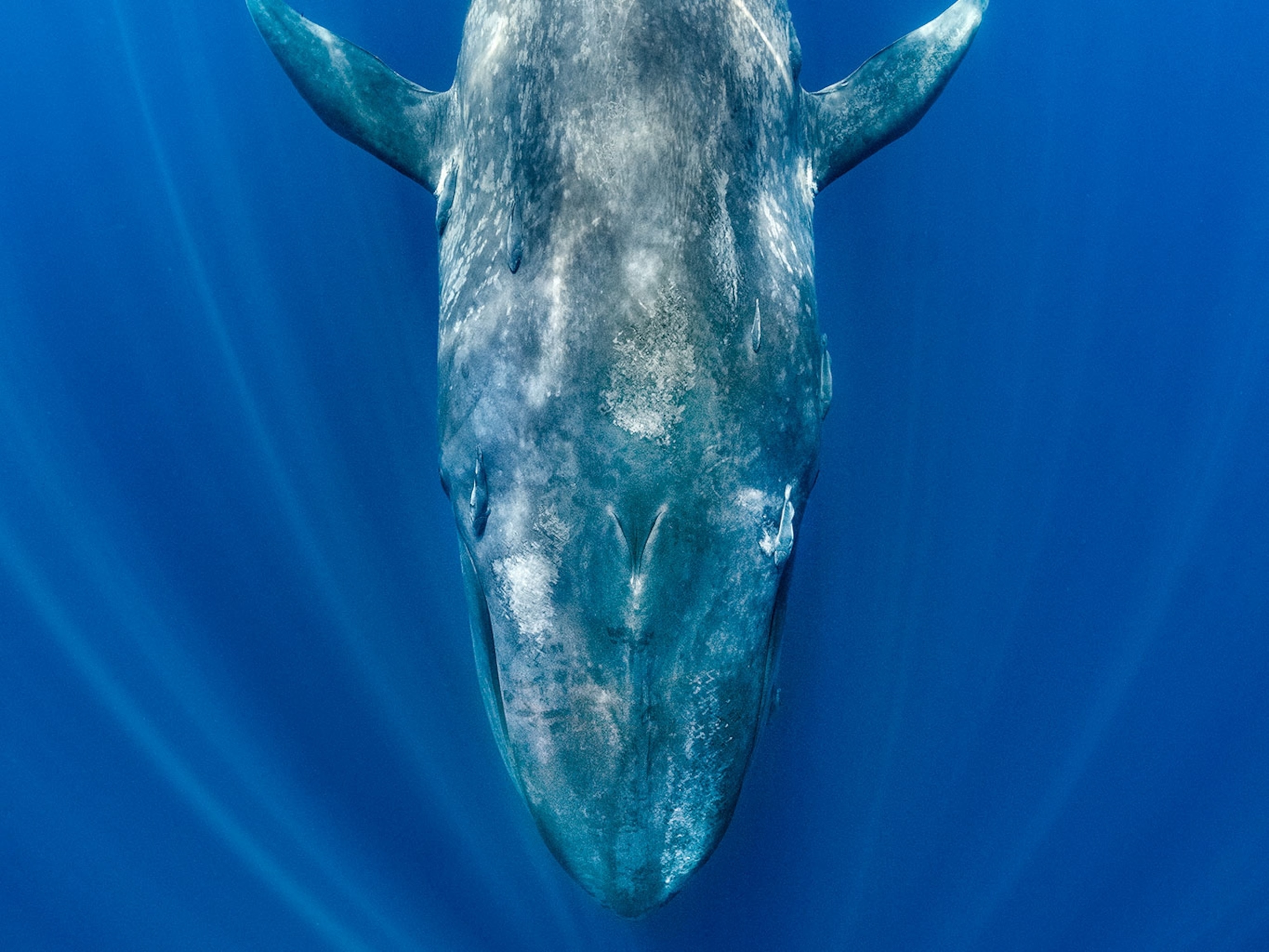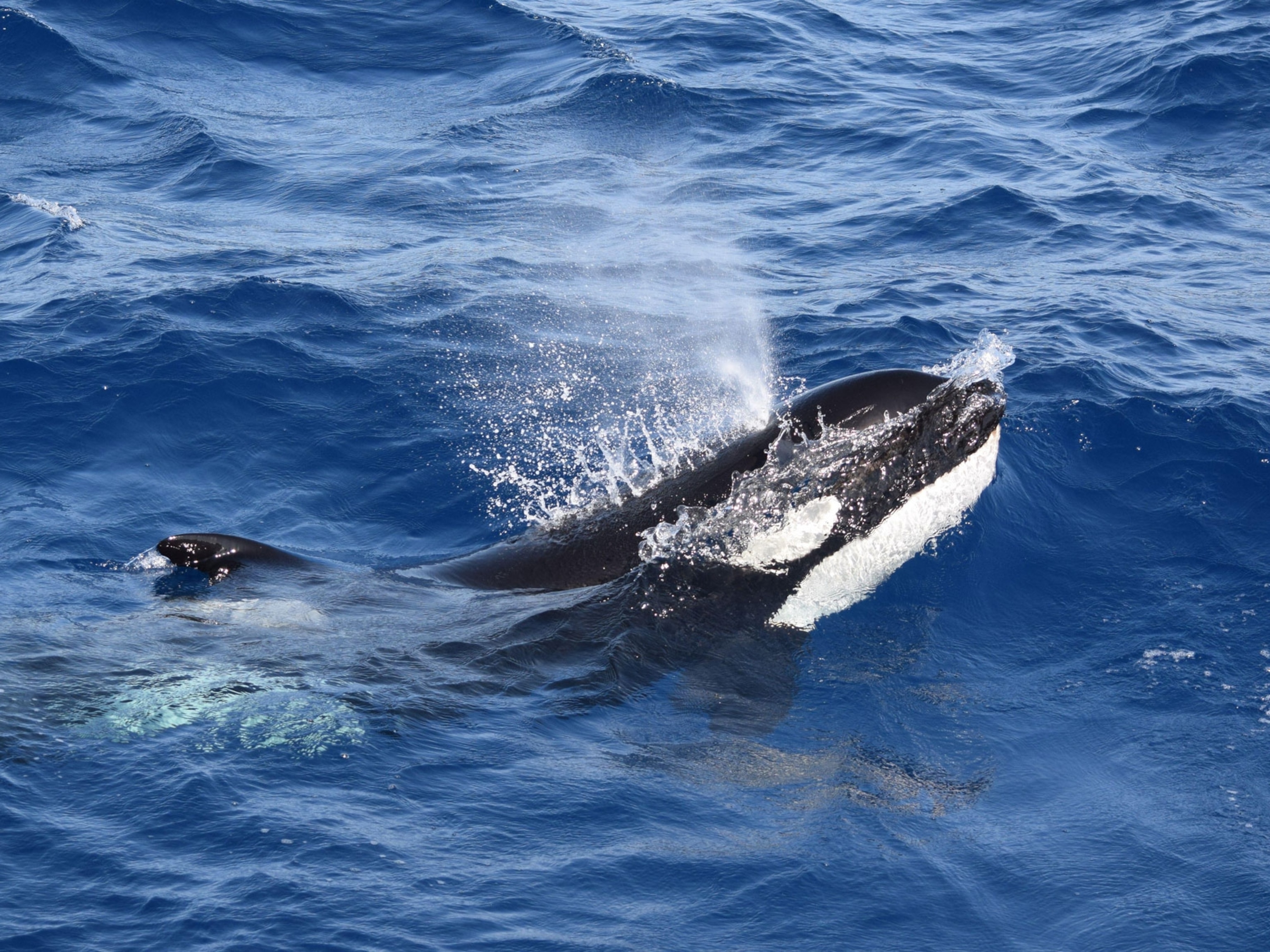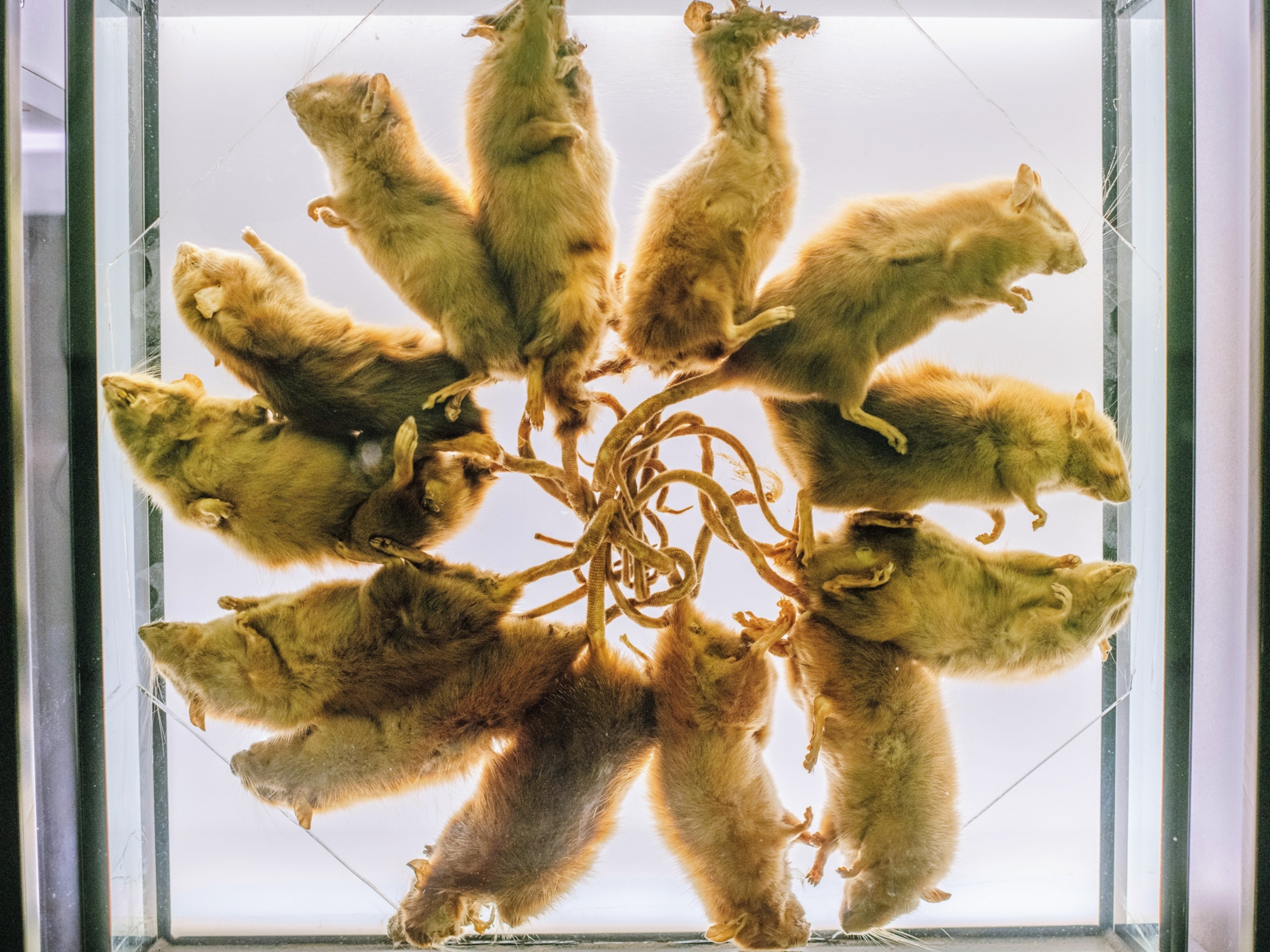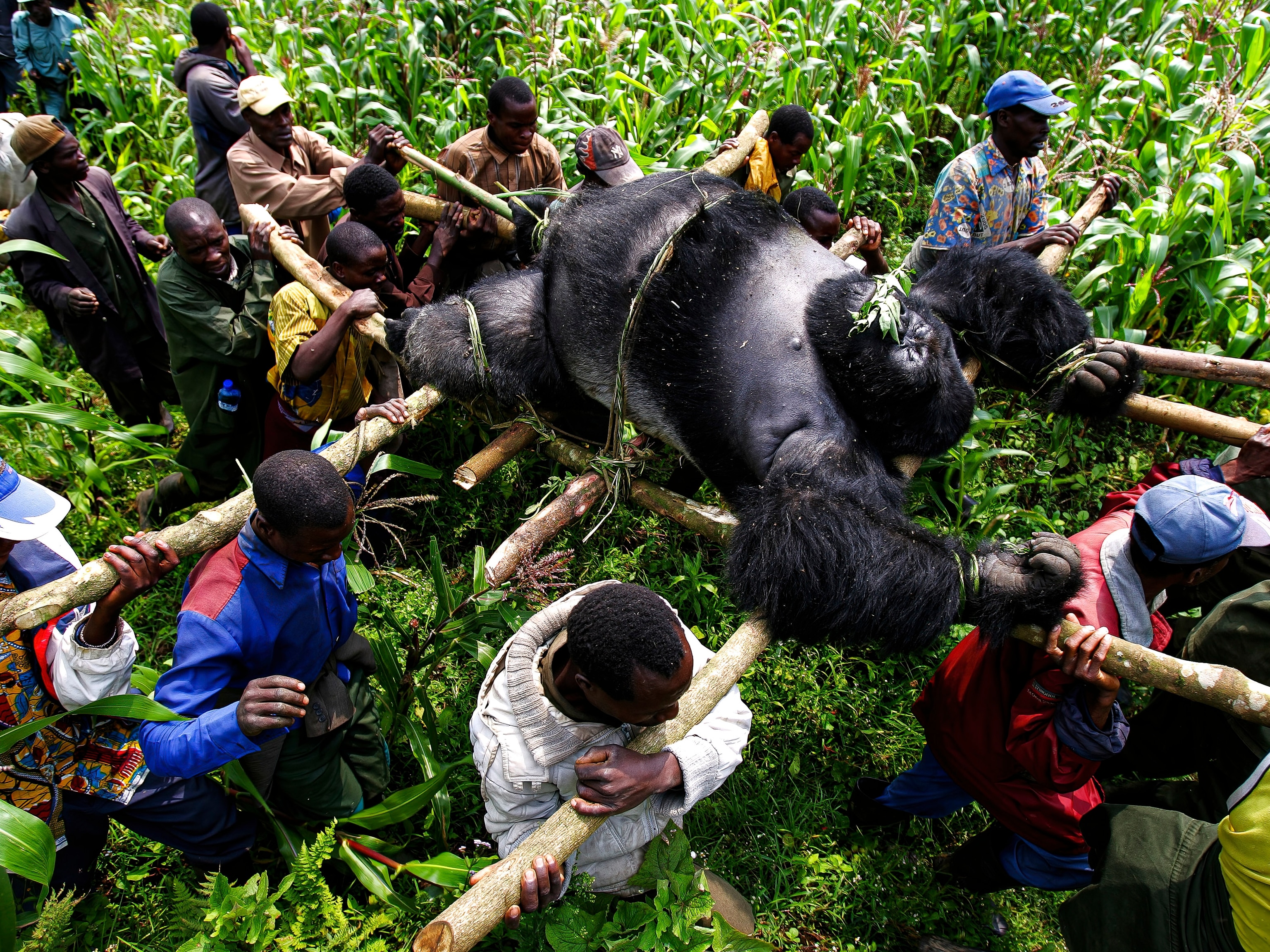Watch the World’s Biggest Animal Lunge for its Dinner
Drone footage taken near New Zealand shows how blue whales lunge and feed on some of the ocean's smallest creatures.
When you weigh 200 tons, even the smallest body movements require a lot of energy. That's why blue whales, Earth's largest animal, are picky eaters.
Stunning new drone footage shows exactly how these massive mammals maneuver to feed on only the most nutritious patches of krill—providing insight on how they make these choices.
Captured by a research team led by National Geographic Explorer Leigh Torres from Oregon State's Marine Mammal Institute, footage filmed in the Southern Ocean near New Zealand shows the moment a whale spots a patch of krill and sizes up whether it's worth expending energy. Krill, which are small two-inch, shrimp-like crustaceans, appear like a lightly colored blob beneath the surface of the water.
As the blue whale in the video approaches the patch, it turns on its side, opening its mouth slightly. Pumping its tail, the whale then lunges, mouth first, into the krill patch.
The scientists found that the whale approached the patch at roughly 6.7 miles per hour. The amount of energy it took for the whale to open its huge mouth then slowed it down to 1.1 miles per hour.
"It would be like me driving a car and braking every 100 yards, then accelerating again," Torres explained in a press release. "Whales need to be choosy about when to apply the brakes to feed on a patch of krill."
Because returning to its cruising speed requires so much energy, blue whales are selective about which patches they will lunge for.
Another sequence from the drone footage shows a whale passing on a patch of krill not worth the energy. Approaching a smaller krill patch, the blue whale opens its mouth slightly before turning back on its stomach and swimming directly through the patch without feeding.
Torres noted that these feeding behaviors show blue whales are making calculated decisions. Understanding this decision-making process can help researchers understand what adverse environmental conditions might make a krill patch unattractive to a blue while, thus affecting the health of the endangered animals and their population numbers.
"Lots of human activity can influence krill availability," Torres explained in a phone call. "We pretty much know having some krill in the water doesn't make good habitat. There has to be krill density."
Harvesting krill and pollutants in the water can both influence how easily krill aggregate and form patches.
Blue whales are listed as endangered by the International Union for Conservation of Nature and are protected by the International Whaling Commission, which granted them protection from whaling in the 1960s. The animals were nearly sent to extinction before the ban on their hunting.
Drones have allowed researchers to take a more intimate and non-invasive look at whale behaviors and habits. Previous methods of observing whales in the wild via airplane or helicopter were less effective and more disruptive. Though it's still important to keep drones a safe distance from the animals, Torres says.





